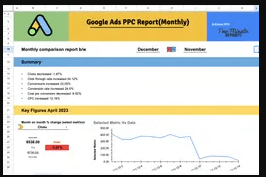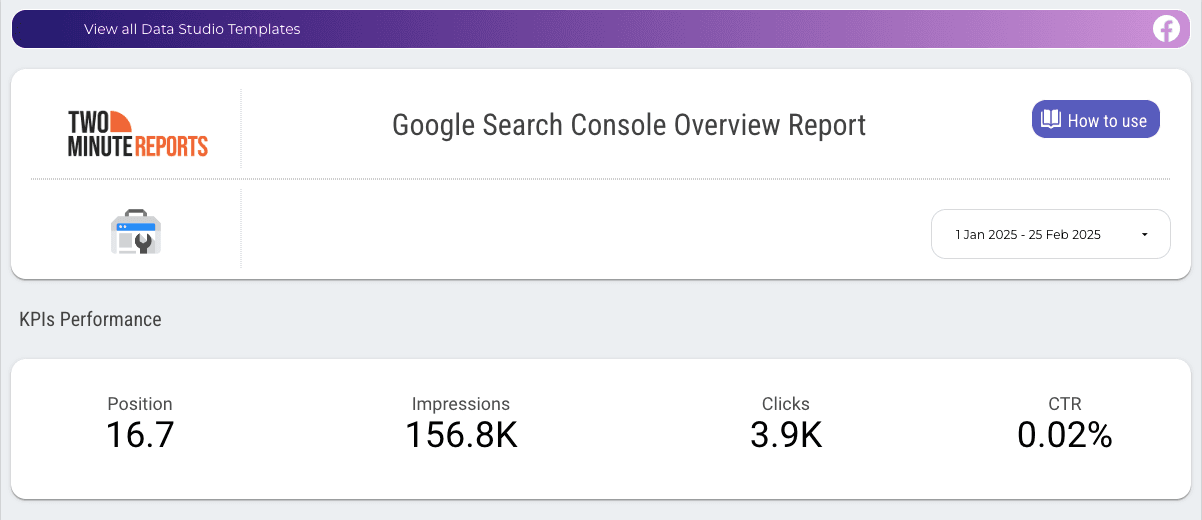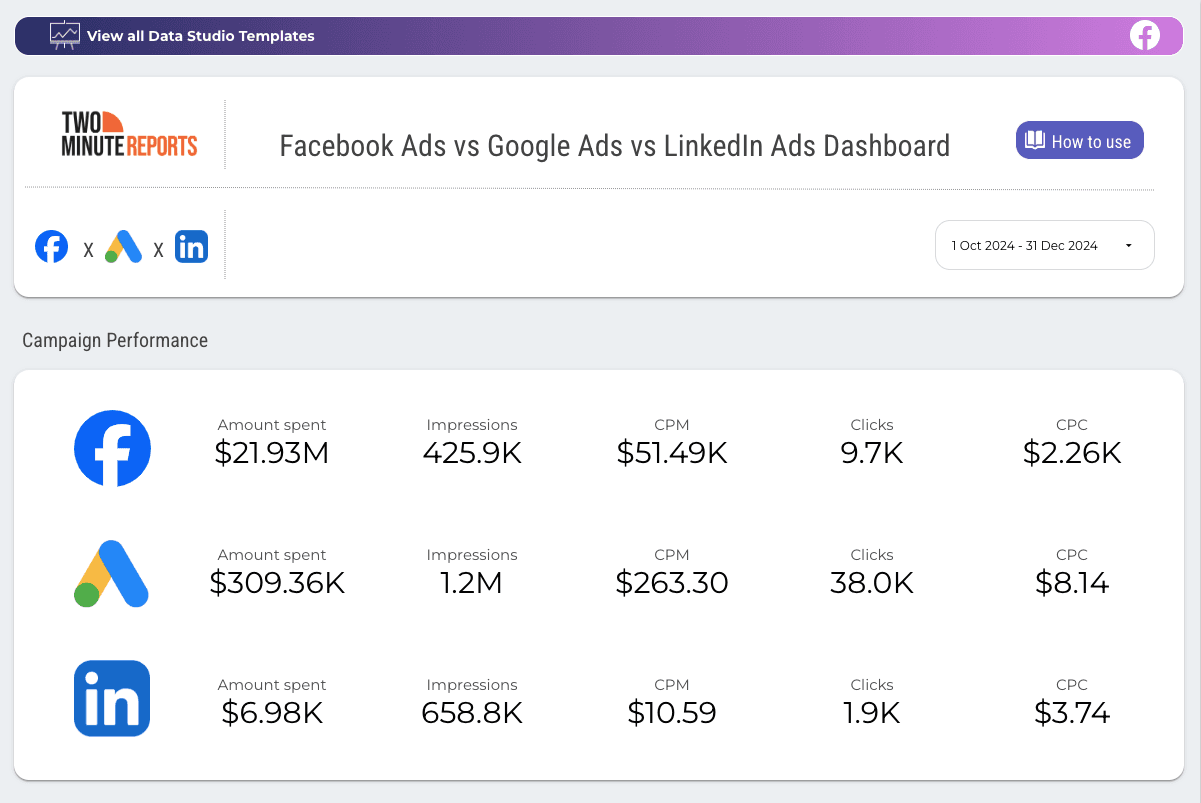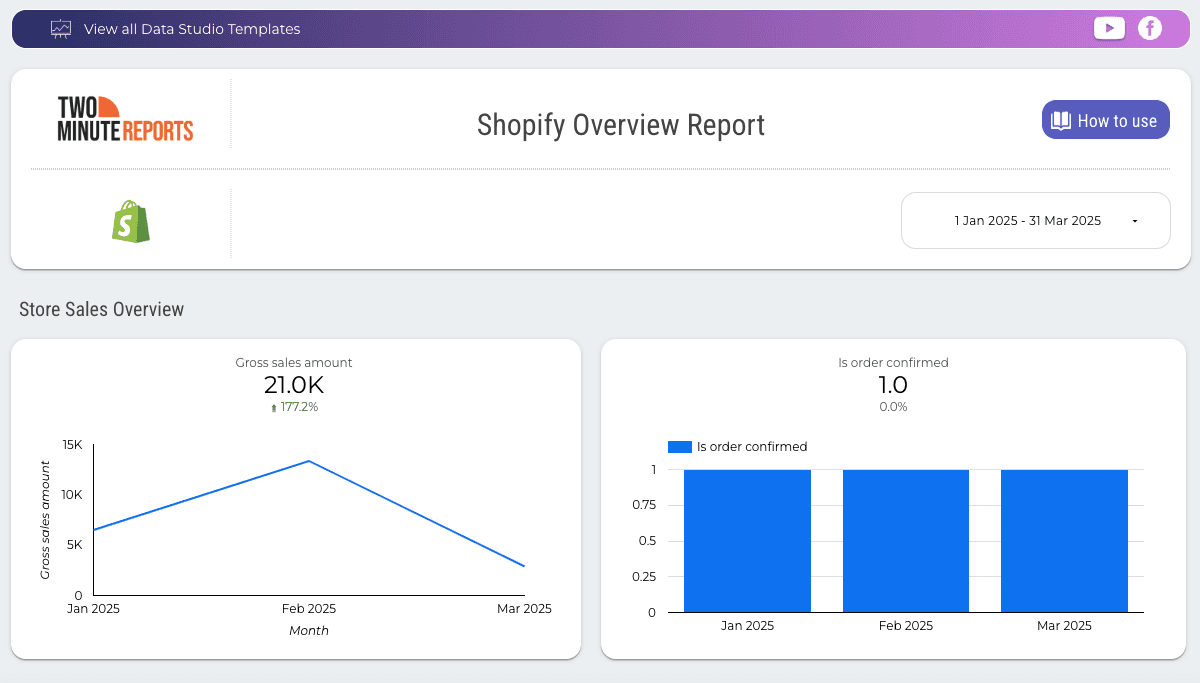Summarize this blog post with:
| In a nutshell, client reporting is crucial for a successful agency-client relationship. A well-crafted client report spotlights key insights and supports data-driven decision-making. To achieve this, you need a step-by-step approach to understanding client expectations and improving with continuous feedback. However, it’s also important to avoid common pitfalls like overwhelming data, improper use of visuals, inconsistent reporting, etc., which undermine your agency’s analytical prowess. The key is to leverage client reporting as a strategic decision-making tool to stay ahead with real-time, accurate reporting. |
In the fast-paced world of client management, one question often echoes above all others: “What’s going on with these numbers?” As an agency, you’re faced with diverse clients, each possessing different levels of familiarity with data and varying expectations. Effectively addressing these inquiries is crucial to building trust and ensuring client satisfaction.
At the heart of this challenge lies client reporting — the art of transforming raw data into meaningful insights that empower clients to make informed business decisions. Whether collaborating with new clients or maintaining relationships with long-term partners, your ability to clearly present key insights in your client reports can significantly influence the trajectory of your relationship. After all, our goal is to direct clients toward guided decisions that truly matter.
Yet, getting started with client reporting can feel overwhelming at first. You may wonder how to leverage it for smarter decision-making, why it's vital for client relationship management, and how to utilize custom client reporting templates to cater to specific needs.
Today, you’ll discover answers to these burning questions and uncover practical strategies to make client reporting for marketing agencies a powerful tool in your arsenal.
What is client reporting?
Client reporting is how agencies update clients on the progress of their projects and marketing efforts. It shares key data and results, helping clients see what’s working. This information allows clients to make better decisions and improve outcomes. Regular reports also strengthen the agency-client relationship by reinforcing transparency and trust.
Overall, client reporting ensures everyone is on the same page and working towards better results together. This approach creates a comprehensive picture of how effectively you serve your clients, demonstrating ongoing efforts and value.

For example, you can use a customizable client report template to highlight the Facebook campaign KPIs and their impact on your client’s return on investment (ROI). This will help address the critical question: “Is my current campaign strategy delivering the expected results, or does it require further adjustments?” Based on the findings, you can take concrete steps to maximize your client's campaign goals.
This is the essence of client reporting, enabling you to move forward with accuracy and precision. Ultimately, it serves one essential purpose: showing proof that your client’s investments are paying off and reinforcing transparency and communication.
Why is client reporting important?
Did you know that implementing data-driven decision-making can boost your operational productivity by 63%? This statistic underscores the importance of leveraging real-time reporting to enhance performance. Client reporting is a vital channel for delivering valuable insights that lead to actionable results, all backed by data.
Here’s why client reporting matters:
- Boost trust and accountability: By consistently delivering measurable results, you instill confidence in your clients regarding your ability to manage their goals effectively, fostering a reliable partnership.
- Demonstrate ROI of marketing efforts: By mapping metrics to campaign outcomes, you can highlight what’s working, why it's effective, and the necessary steps to optimizing your client’s bottom line, enhancing loyalty and retention.
- Align goals and KPIs: Properly aligning KPIs allows you to revise campaign strategies and achieve desired results, ensuring you stay in sync with your client’s strategic business outcomes.
- Be proactive: Timely communication of reporting insights enables you to detect ongoing issues and respond proactively with corrective action, eliminating frustration and client dissatisfaction.
- Informed decision-making: Analyzing actionable takeaways and utilizing those insights helps you craft compelling next steps, ensuring that future decisions are based on data-driven evidence.
Now that you understand the importance of client reporting, let’s explore how nurturing long-term agency-client relationships is crucial.
Why client reporting matters in client relationship management?
Client reporting is the cornerstone of effective client relationship management. When done right, it can transform interested prospects into long-term, loyal clients. However, achieving this is not a one-time effort—it requires ongoing communication, clear alignment of expectations, and a structured approach to make reporting impactful for the clients.
Here’s a three-step process to leverage client reporting in implementing an effective client management strategy:
1. Setting clear expectations
Did you know that 27% of agencies struggle to set clear expectations with clients? This disconnect can significantly affect your client’s lifetime value, resulting in missed growth opportunities.

So here’s how you can set clear expectations and foster a long-term agency-client relationship:
- Understand your client's goals: Have an honest conversation about your client’s long-term and short-term goals. What do they genuinely need from you? What actions can you take to enhance client engagement? How can you streamline the reporting process? The answers to these questions will guide you to concrete solutions.
- Be transparent: Explain how your processes work, including the realistic timelines involved and their alignment with your client’s reporting goals. Avoid making false promises, which undermine trust and harm your agency’s reputation.
- Establish deliverables and timelines: Reach a mutual agreement on specific timelines for delivering client reports. Regular check-ins and progress updates will help maintain momentum, enhance consistency, and foster teamwork.
2. Deliver accurate reporting insights
As a data-driven agency, you help clients leverage your expertise. Provide a comprehensive performance overview highlighting winning strategies, addressing campaign challenges, and identifying necessary optimizations, translating insights into measurable outcomes.
Remember: Your ultimate goal should be to offer fresh perspectives on your clients' strategic challenges. Doing so will help instill confidence and reinforce your agency's credibility as a trusted growth partner.
3. Incorporate constructive feedback
Managing client relationships goes beyond providing actionable reports. Successful communication is a two-way street. You must make incremental changes based on your client’s feedback to implement effective reporting. Here’s how to establish a feedback mechanism to strengthen the agency-client relationship:
- Be an active listener: Allow your clients to share meaningful feedback on your reports. Stay receptive and act on their suggestions to boost satisfaction. If clients voice specific concerns, address them promptly to show that you are committed to meeting their reporting needs and making them feel heard and valued.
- Continuous improvement: If there are discrepancies in the feedback, be transparent and politely inform your clients that certain action items in the report must be revisited. This approach can help prevent misunderstandings and ultimately strengthen the ongoing feedback loop.
Implementing these strategies can foster stronger client connections and ensure consistent growth through data-driven decisions. Next, let's explore how to make client reporting effective to maximize measurable wins.
How to do effective client reporting?
Effective client reports are essential for scaling data-driven decision-making. They enable you to track progress, make necessary adjustments, and provide meaningful insights to achieve expected results. However, reports need a structured approach that helps clients understand their investments and ROI to be impactful. Here’s how you can make it valuable:
1. Know your target audience
An exceptional client report loses value if it doesn’t resonate with its audience. To ensure your reports meet their expectations, consider the following questions:
- Who is the target audience for this specific report? What are their ideal requirements?
- What are the key marketing goals of the campaign? Is it brand awareness, lead generation, or sales conversion?
- What are all the KPIs that align with the campaign goals? How does it impact the critical aspects of the campaign performance?
- How will you present insights consistently with engaging visuals?
- How can you leverage those insights to drive informed business decisions?
- What are the key takeaways and conclusions?
Answering these questions will help you create insightful reports tailored to your audience’s preferences and goals. As a result, you can align key expectations and communicate information that is clear and relevant to them.
2. Tell a powerful story with data
Reports rely on numbers, but they’re more than just data. A data-driven report should highlight “aha moments” by connecting metrics to meaningful insights, thus positioning you as a creative partner.
For example, simply stating that “ABC’s Facebook Ads campaign generated a 50% click rate and a 70% conversion rate” won’t cut it. Clients may struggle to understand the campaign’s impact on their ROI without context.
Instead, a more compelling narrative could be: “ABC’s Facebook Ads campaign resulted in a 50% increase in clicks and a 70% conversion rate, attributed to a precise audience segmentation strategy. This success led to significant expansion at the bottom of the funnel, enhancing overall return on investment.”
With data stories becoming the preferred way of consuming analytics, agencies must deliver results that create an emotional connection with the clients, fostering long-term relationships.
3. Highlight challenges and opportunities
Sometimes, things might shift gears, resulting in decreased performance outcomes. In such cases, be honest about it. Explain what went wrong, why it happened, and most importantly, outline how these challenges can be turned into actionable opportunities.
Using clear and non-defensive language while addressing these challenges in your report is crucial. For example, “We observed a decline in your website’s organic traffic due to keyword overlap. However, we see this as an opportunity to better target audience intent and enhance search rankings”. This shows you have a proactive approach to solving problems, reinforcing trust, and transparency.
Overall, embracing setbacks as opportunities strengthens client relationships and paves the way for sustainable success.
4. Set actionable goals for the future
The most obvious answer that your client report should answer is, “What’s next”?.
Highlight clear, actionable goals that demonstrate the next steps for progressive growth. This will help you and your client to stay aligned on the key objectives, providing a roadmap to accelerate smarter business decisions.
Remember that your client reports should serve as a beginning for the next, driving future strategies and continuous improvement.
5. Deliver easily accessible client reports
Your clients expect clear, accessible reports without delays. Failing to deliver can create misunderstandings, affecting your agency-client relationships.
To overcome this, you can schedule your reports for delivery at definite intervals. You can use a reliable third-party add-on like Two Minute Reports to automatically update your spreadsheets with live data and convert them to real-time dashboards.
Once you've completed it, you can share the reports in PDF, Excel, or Spreadsheet formats to keep your clients updated on the latest developments and future actions.
Now that you understand how to establish an effective client reporting process, it's time to take action. Let's explore the steps to creating a client report, which will help you streamline the process and extract meaningful insights.
Step-by-step guide to master client reporting
This six-step approach allows you to easily create professional client reports, acting as a powerful decision-making tool. Here’s how you can:
1. Determine the objective and KPIs
The groundwork for creating successful agency-client reporting lies in understanding the objective. What is the purpose of this report? How can I map the KPIs to reflect the campaign insights? What outcome am I going to accomplish? What future actions should my client undertake based on the recommendations?
The answers to these questions will guide you in the right direction. Instead of overwhelming your clients with unnecessary data, you’ll get a clear picture of what they want, enabling you to deliver intent-driven reports to boost analysis and efficiency.
2. Gather the necessary data
Client reporting for marketing agencies involves collecting unprecedented data from website traffic to ROAS. However, the real potential lies in selecting the right data from the diverse options and translating them into meaningful insights.
Each type of client report serves a different purpose, and the information gathered should align with the specific goals of the report. Your clients wouldn’t want to see a lengthy report only to get baffled and lose focus. Pay close attention to what truly matters and collect those necessary KPIs to deliver actionable insights.
| Pro Tip: With Two Minute Reports, you can integrate your preferred marketing channel, extract relevant KPIs, and quickly bring them directly into your client reports. |
3. Decide on the report structure
A well-organized report helps your clients easily locate critical insights effortlessly to make informed decisions. Here’s how you can structure your client report to achieve this:
| Heading | What is it? | Content |
| Title page | Cover page of your client report. | Title of your report, Client name, Agency name, and report date. |
| Executive summary | Give an overview of your report, highlighting the most critical findings and recommendations. | Includes KPIs, important insights, strategies, and achievements. |
| Introduction | Briefly describe the report's purpose, duration, and necessary context. | For example, “This report summarizes the results of our LinkedIn marketing campaign conducted from Dec to Feb 2025.” |
Main body | The primary section of your client report detailing the key campaign insights. | Organize information into sub-sections, each presenting a detailed analysis and insights. |
| After presenting your insights, offer a detailed analysis of what it means. What’s the key takeaway from the entire report? Is the campaign conversion improving? Why is a particular metric declining? | Incorporate data storytelling to craft a compelling narrative. For instance, “The ROAS for ABC client’s FB campaign saw an increase of 3% due to targeted offers and discounts. | |
| Recommendations | Suggest actionable next steps based on the analysis and findings to help achieve your client's goals and maximize KPIs. | Here’s how you can make it impactful: “To further increase campaign profits, we recommend upselling services to similar audiences who are most likely to convert.” |
| Conclusion | Emphasize the main findings of the report. Provides a recap of the analysis and future actions to improve your client’s bottom line. | For example, “The campaign resulted in a 20% increase in conversions, with useful opportunities to minimize ad spend. We can experiment by re-allocating the budget to more targeted segments to boost ROI further.” |
4. Customize the report
Now, it's time to get the ball rolling. Start customizing your report to align with your client’s campaign goals. Explain how each KPI contributes to the overall strategy, demonstrating its role in driving success.
However, manually customizing your report for different audiences can be daunting. With TMR, you can choose from over 100+ reporting templates to create professional client reports within minutes. The best part is that you can repurpose the template for new client accounts to drive valuable insights quickly.
5. Inform how clients can track future progress
Your clients should be able to measure the effectiveness of your recommendations. This gives them the confidence that you are continuously committed to their goals, strengthening sustainable outcomes.
With a real-time dashboard, your clients can track the crucial KPIs that impact their business goals. This provides transparency and empowers them to make insightful decisions, ensuring long-term success. By offering these crucial insights, you can transform client partnerships into a powerful driver of growth and performance.
| Pro Tip: With Two Minute Reports, you can create actionable reports that automatically update key metrics. Your clients can track real-time KPIs that impact their strategic goals and visualize progressive outcomes at their fingertips. |
6. Schedule a follow-up
Following up with your clients after discussing the next steps is important to determine how to move forward. This helps you to stay aligned and proactively implement actionable outcomes, driving continuous improvement and efficiency.
| Pro Tip: Set specific deadlines for each action item and promptly show up on the next follow-up date. Additionally, send a precise summary of the discussions after each follow-up to keep the momentum going. |
Five essential client reporting examples with templates
In this section, let us explore the five important client reporting templates and examples to help channel data-driven decisions and boost efficiency.
1. Monthly client marketing report
A monthly client marketing report provides a comprehensive overview of your campaign performance. You can gather valuable data on how KPIs impact your overall marketing efforts, highlight success, and identify areas for improvement, enabling clients to make informed decisions about allocating resources effectively.

For example, the Google Ads monthly client report template allows you to perform a detailed month-on-month performance comparison. Track high-intent keywords, CTR, and conversion rates for different device types, along with a table illustrating KPIs to assess the monthly performance analysis.
Primary focus Monthly campaign performance analysis for Google Ads Who is this client report template for? PPC managers, and digital marketing specialists. KPIs you can track Clicks, Impressions, CTR, Reach, CPC, Cost, Conversions, Cost Per Conversion, Conversion rate (%), Bounce rate (%). |
2. SEO client report
An SEO report demonstrates your client’s website performance in the organic search world by tracking critical KPIs. You can spot ranking opportunities, optimize user intent, and maximize search visibility to surpass the Google search battle.

To drive actionable SEO insights, customize your Google Search Console dashboard to visually track clicks, impressions, CTR, and rank. You can analyze how search queries, pages, and audience demographics impact your key SEO KPIs with detailed comparison tables. Highlight actionable solutions to boost organic traffic, delivering sustainable SEO outcomes.
Primary focus SEO KPI tracking - Google Search Console Dashboard Who is this client report template for? SEO marketers, Search strategist/Specialists KPIs you can track Impressions, Clicks, CTR, and Rank |
3. Web Analytics client report
Is your website converting engaged users into long-term customers? How effectively is the conversion funnel optimized for high ROI? Your clients expect answers to these questions in the web analytics (GA4) report.

For example, with this free GA4 ecommerce revenue client dashboard, you can holistically track KPIs such as total purchase, revenue, checkouts, etc., to measure overall profitability. As part of effective ecommerce development, tools like this provide expanded shopping funnels and a detailed revenue breakdown by channel/device, helping you understand customer preferences and make informed decisions to maximize ecommerce sales.
Primary focus Tracking ecommerce store revenue in the GA4 dashboard Who is this client report template for? Digital marketers, Web analytics specialists, Ecommerce managers KPIs you can track Total purchases, Purchases, Revenue, Average purchase revenue, and Checkouts |
4. Cross-channel PPC client report
A cross-channel PPC report helps clients understand which platforms drive the highest revenue. You can discover the top acquisition channels, track conversion attribution, and make data-driven adjustments to maximize resource efficiency.

Our multi-channel PPC dashboard gives you a holistic view of your client’s Facebook, Google, and LinkedIn ad campaigns. Visualize key KPIs, such as Amount Spent, CPC, CPM, etc., as scorecards to uncover critical insights. Compare cost, impressions, and clicks across all three platforms to optimize ad budgets and boost profitability.
Primary focus Multi-channel PPC campaign dashboard: Google Ads, Facebook Ads, LinkedIn Ads Who is this client report template for? Digital marketers, Campaign managers KPIs you can track Amount Spent, CPC, CPM, Clicks, and Impressions |
5. Ecommerce client report
With an ecommerce report, you can make informed decisions to boost your client’s overall revenue. You can centralize store operations, track real-time performance, and expand the customer base by launching tailored campaigns to boost ROI.

The good news is that you don’t have to manually extract ecommerce KPIs. Instead, you can quickly use our Shopify overview client report template to automatically pull real-time store data to your fingertips. From net sales and top-performing products to new vs. returning customers, gain comprehensive insights and act decisively to improve overall efficiency.
Primary focus Shopify overview: Tracking ecommerce KPIs Who is this client report template for? Shopify store owner, ecommerce manager, and digital marketing manager KPIs you can track Gross sales, Top products by sales, Net sales amount by country, New vs Returning customers, Customer order count, Tax amount, Shipping amount. |
While leveraging custom client reporting templates is beneficial, it is important to be mindful of certain mistakes that hinder your reporting efficiency. We’ll discuss them in the next section.
Six common marketing agency reporting mistakes to avoid
In this section, you’ll understand the six common client reporting mistakes that hold back your agency’s efficiency and credibility.
1. Preparing excessively long reports
As an agency marketer, you might be tempted to include every intrinsic detail in the report. However, overwhelming your client with an excessively detailed report can make it difficult to extract meaningful insights, as they get lost in the sea of data.
Solution:
Focus on delivering in-depth insights that are easily digestible. Use clear headings, sub-headings, bullet points, and summaries to highlight actionable takeaways in each section. Incorporate visual elements to comprehend complex data and turn them into impactful insights. Prioritize clarity and relevance to ensure that your clients can quickly grasp the value you are delivering.
2. Failing to demonstrate long-term goals
Every successful client-agency relationship starts with a long-term goal. However, agencies tend to focus heavily on short-term results, overlooking opportunities to leverage sustainable outcomes. As a result, clients may struggle to see the broader impact of their investments, slipping potential insights through the cracks.
Solution:
Showcase the “before” and “after” of your marketing efforts, highlighting trends and historical data comparisons. You can use TMR to customize your reports with engaging visuals such as timelines, charts, and scorecards to showcase the bigger picture, reinforcing the speed and effectiveness of your marketing agency reporting.

3. Demonstrating selective insights
If you selectively highlight only the favorable outcomes, you create a narrative that highlights only the positive results, neglecting the full scope of data. This greatly hinders your ability to implement data-driven outcomes, ultimately impacting your client’s bottom line.

Gartner predicts that by 2028, 25% of chief data and analytics officers' vision statements will become decision-centric. This shift emphasizes using meaningful data to make more informed decisions. Cherry-picking results contradict this evolution, preventing you from steering in the right direction.
Solution:
Be transparent by demonstrating the full picture. Use this opportunity to explain how you can transform impediments into opportunities for success. Provide detailed insights on what was wrong, why it happened, and the corrective actions needed to move forward. Doing so will help your clients understand your agency’s commitment to driving actionable goals and maximizing measurable results.
4. Not using client reporting to boost retention
Although maximizing revenue growth is one of the top 3 challenges, many agencies overlook the potential of client reporting for upselling additional services. Focusing solely on delivering results without leveraging upselling tactics can inhibit your client’s growth and limit your ability to move beyond mundane data dumps.

Solution:
Spot actionable areas in your client report to recommend additional benefits. Next, connect those insights to new service opportunities, ensuring your reports are more than just numbers and visuals. For example, if your campaign report shows high traffic but low engagement, you could leverage this opportunity to recommend future services, such as implementing targeted advertising and bidding to boost conversions.
5. Inconsistent reporting schedule
Determining the client reporting frequency is crucial to scaling data-driven insights. Failing to have a systematic approach will greatly impact your agency-client relationship. Your clients may be unclear about fixed deadlines and surprised with unexpected reporting outcomes.
Solution:
Set clear expectations on ideal reporting schedules. Use Two Minute Reports’ Schedule Refresh feature to automatically deliver reports at your client’s preferred intervals. Maintain consistency by delivering reports in a uniform format such as PDF, Excel, or Spreadsheet. This ensures your clients receive timely, organized reports aligning with their needs and preferences.
6. Using wrong visuals in client reporting
Sometimes, your visuals might be cluttered, complex, or clashing with your client's goals. For example, it wouldn't be the best choice if you were to report sales performance data for the past year using a pie chart because pie charts show the parts of a whole and do not show trends over time.
In such cases, your efforts to interpret actionable information could fall flat, confusing your clients and undermining the effectiveness of your report.
Solution:
Understand the type of data you want to represent and use appropriate visuals. Bar charts are great for comparing categories, whereas line graphs are ideal for showcasing trends. Use scatter plots to represent the correlation between variables.
Tailor your visuals to fit your clients' goals. Keep it straightforward, enabling your clients to make informed decisions easily.
Automate client reporting for marketing agencies
Now that you’ve mastered creating effective client reports, it’s time to put them into action. With TMR, you can effortlessly create, automate, and optimize reports, empowering you with concise and actionable insights that drive real results.
Before working with client reports, ask, “How can this report help my clients make better informed decisions?” This ensures that the report is not only about presenting data but also about delivering actionable outcomes that directly enhance your client’s goals.
Are you ready to automate client reporting for your agency? Try Two Minute Reports' exclusive features free for 14 days and drive actionable insights 10x faster.
Frequently Asked Questions
Client performance reporting lets you deliver valuable insights about your client’s marketing campaigns to support informed decisions. You can track custom KPIs and measure how your strategies have impacted the overall ROI outcome, relative to your client’s goals.
The main purpose of a client report is to fine-tune raw data into insightful outcomes, helping you proactively optimize key business decisions to maximize the bottom line.
A client reporting template lets you centralize KPIs, monitor performance in real-time, and streamline analysis for improved efficiency. With seamless customization, you can drive actionable insights that elevate your client’s goals, enabling you to make informed decisions.
Gain a clear understanding of your client’s objectives and map relevant KPIs to guide your strategy. Use engaging visuals to contextualize your data and provide practical recommendations to move forward with accurate data-driven decisions.
Related Blogs

Meet the Author
Shalini MuruganShalini is driven by ideas that create a tangible impact. At Two Minute Reports, she specializes in content that helps marketers optimize their reporting workflows. When she's not transforming complex data into meaningful insights, you might find her lost in a book, jotting down ideas in her notebook, or connecting the dots others overlook.





